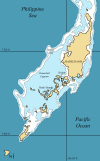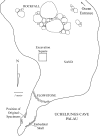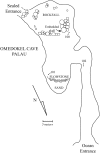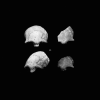Small-bodied humans from Palau, Micronesia
- PMID: 18347737
- PMCID: PMC2268239
- DOI: 10.1371/journal.pone.0001780
Small-bodied humans from Palau, Micronesia
Erratum in
- PLoS ONE. 2008;3(3). doi: 10.1371/annotation/0b1a375a-ea43-4586-824f-05bc5b359d63 doi: 10.1371/annotation/0b1a375a-ea43-4586-824f-05bc5b359d63
Abstract
Newly discovered fossil assemblages of small bodied Homo sapiens from Palau, Micronesia possess characters thought to be taxonomically primitive for the genus Homo.
Background: Recent surface collection and test excavation in limestone caves in the rock islands of Palau, Micronesia, has produced a sizeable sample of human skeletal remains dating roughly between 940-2890 cal ybp.
Principle findings: Preliminary analysis indicates that this material is important for two reasons. First, individuals from the older time horizons are small in body size even relative to "pygmoid" populations from Southeast Asia and Indonesia, and thus may represent a marked case of human insular dwarfism. Second, while possessing a number of derived features that align them with Homo sapiens, the human remains from Palau also exhibit several skeletal traits that are considered to be primitive for the genus Homo.
Significance: These features may be previously unrecognized developmental correlates of small body size and, if so, they may have important implications for interpreting the taxonomic affinities of fossil specimens of Homo.
Conflict of interest statement
Figures










References
-
- Richards GD. Genetic, physiologic and ecogeographic factors contributing to variation in Homo sapiens: Homo floresiensis reconsidered. J Evol Biol. 2006;19:1744–1767. - PubMed
-
- Foster JB. Evolution of mammals on islands. Nature. 1964;202:234–235.
-
- Diamond J. A question of size. Discover. 1992;13:70–77.
-
- Dickinson WR, Athens JS. Holocene paleoshoreline and paleoenvironmental history of Palau: Implications for human settlement. J Isl and Coastal Arch. 2007;2:175–196.
Publication types
MeSH terms
LinkOut - more resources
Full Text Sources

